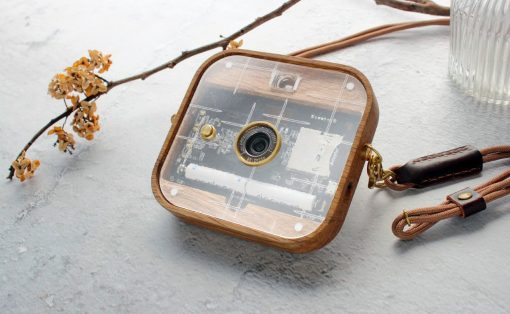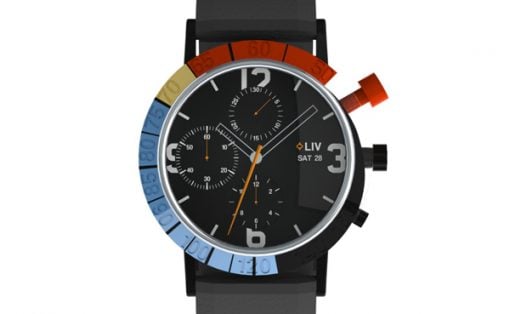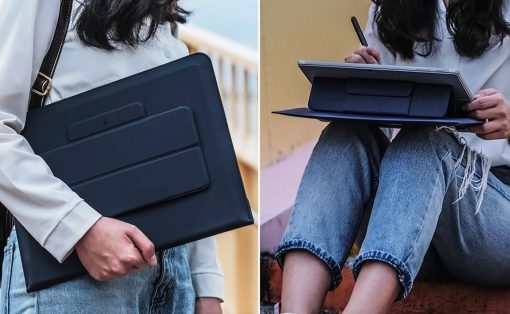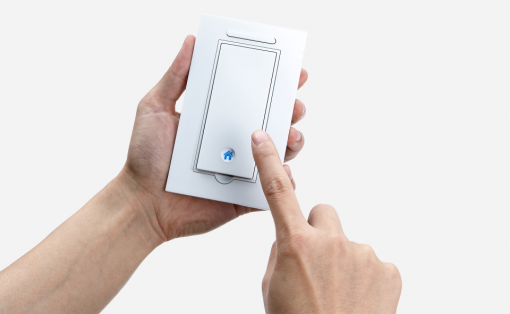![]()
Google’s quirky Pixel phone design hasn’t had much time in the public’s eye, so it’s reassuring that it might not be going away just yet.
The Pixel 6 and its bigger sibling was a game-changing phone for Google in more ways than one. It was the first Google phone to use a custom-made processor designed by Google itself, for one, and it’s also the first time that Google truly embraced making experiences more personal. The Pixel 6, however, might be best remembered for introducing a rather unique and perhaps polarizing design, one that might be sticking around for the Pixel 7 later this year. Given the fast turnover when it comes to phone designs, this consistency is actually critical in cementing Google’s Pixel brand.
Designer: Google
![]()
![]()
The Pixel 6 isn’t the first to bear a “visor” design that has its cameras lined up in a row. That distinction belongs to the Nexus 6P from 2015, made by Huawei and also branded by Google. The Pixel 6, however, pulls it off in a more visually tasteful way that seems to attract attention and its fair share of fans and detractors. You can’t please everyone, of course, but Google dared to do something that few probably would have had the audacity to try.
The design is unique, but not just for uniqueness’ sake. Having the somewhat tall camera bump across the entire width of the phone means that it wouldn’t be wobbling when laid down on a flat surface. It also means that the phone will be lying down at a bit of an incline, making it easier to view the phone’s contents without picking it up and without having to crane down your neck.
The Pixel 6 and Pixel 6 Pro have only been around for four months, and yet we’re already seeing the start of rumors about what will come next. Based on these early leaks, the Pixel 7 could be a dead ringer for the Pixel 6. On the one hand, that’s not exactly unexpected, but it also is surprising given how frequently companies change their designs year after year.
There will be very subtle differences, at least if you’re the type to pay very close attention to things that might not even be noticeable at first glance. Based on the earliest CAD 3D models of the non-Pro Pixel 7, the two cameras on the left side of the phone will be contained in a pill-shaped enclosure. It’s a visual flourish that probably does nothing to improve functionality, but it could also make some things more visually consistent with the Pro model.
![]()
![]()
Designer: @xleaks7 (via choosebesttech.com)
Actual renders of the Pixel 7 Pro show the same “two cameras in a pill,” but with a third camera that sets this model apart from its sibling. The render also suggests that the camera module will be visually integrated with the rest of the side frame compared to the Pixel 6’s “visor.” It’s a subtle change that few will probably even notice, but it makes the design look more coherent and unified.
![]()
The most striking revelation from these early leaks is that the Pixel 7 will look exactly like the Pixel 6 except for those minor details. The punch-hole cutout in the middle of its forehead is still there, for example. And so are all the missing hardware, like a traditional fingerprint scanner and a 3.5mm headphone jack. Given how those have been absent for years, there’s really no surprise there.
Some might consider this lack of major changes as a sign of design stagnation over at Google HQ, but that’s not exactly the case. Google could easily change or even tweak the Pixel 6 design for this year’s model and join its peers in a parade of phones that look so different every year yet also look like each other. Instead, Google may be deciding to focus on something that many people have either forgotten about or taken for granted, brand recognition.
![]()
![]()
Aside from the small “G” logo that few people will even see, especially while you’re holding your phone, there is little to distinguish a Pixel phone from other phones prior to the Pixel 6. The square camera module has been adopted by many other brands, including Apple, so it is no longer distinctive. Those brands have also started moving away from the design but have ended up resembling one another. In contrast, there is still nothing that looks like the Pixel 6 today.
![]()
Google has stumbled upon a distinctive design, and now it’s time to hunker down on that until it becomes the Pixel phone’s identity. Even Apple doesn’t change its designs drastically at a rapid pace. When it switched back to flat, chamfered edges, it still retained that bucket-style notch that almost no one other than Apple uses today.
Design consistency also inspires familiarity and confidence. You know you won’t have to relearn where certain features or, in this case, parts are just because you’re upgrading to a new model. It might even be possible to reuse some accessories like cases if the dimensions are exactly the same as well. This, in turn, could reduce the number of wasted materials in manufacturing and buying new accessories, which eventually end up in landfills.
![]()
![]()
Of course, we’re still at an early point where everything is still conjecture. Google could very well end up defying rationality and move away from what some already consider a winning design. That, however, could actually hurt the Pixel brand in the long run, especially at a time when there are already doubts whether Google can actually keep up with Samsung and Apple. The company might be famed for its Web services and its Android platform, but its track record when it comes to making and supporting phones has so far been less than stellar.
![]()
Designer: Steve Hemmerstoffer (via Smartprix)






